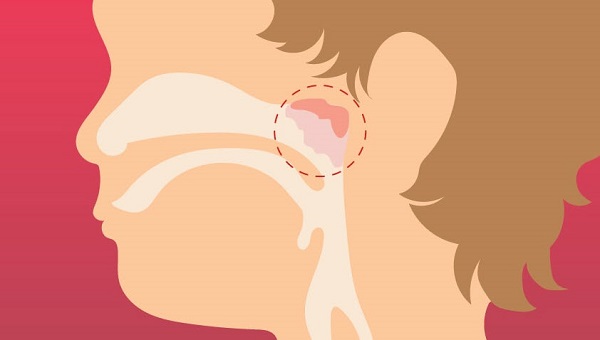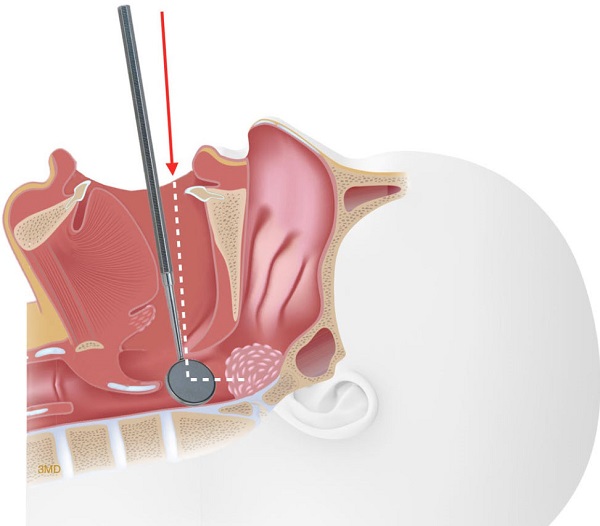If you are considering having your adenoids removed, you are likely anxious about the procedure. Adenoid removal is a common surgery, but it can still be daunting to go through. This post will provide information about adenoid removal to help you make the best decision for your health. We will outline what happens during the surgery, what to expect afterward, and any potential risks or complications. By the end of this post, you should have a good understanding of whether or not adenoid removal is right for you.
Contents
Adenoidectomy is a common surgery performed to remove the adenoids, small lumps of tissue located at the back of the nose. This surgery is usually recommended for children who have recurrent or chronic infections of the airways, such as sinusitis and otitis media (middle ear infection). Adenoidectomy is a relatively safe procedure with few risks, but it can occasionally cause complications. Most people recover fully after adenoidectomy surgery and experience improved breathing and less frequent infections.
What Are Adenoids?
Adenoids are small lumps of tissue that are located above the roof of the mouth, behind the nose. They serve an important purpose in young children by being part of the immune system and helping to protect the body from viruses and bacteria. Adenoids begin to shrink around age 5 to 7 in children, and can be almost completely gone by the teenage years.
What Do Adenoids Look Like?
Adenoids are small, fleshy lumps of tissue that can be found at the back of the nose. They are part of the body’s lymphatic system, which helps to fight infection. Although they are most commonly associated with children, adenoids can also occur in adults.
Adenoids can vary in size, but they are typically much smaller in adults than in children. In fact, adenoids often shrink or disappear entirely during adulthood. However, some people may continue to have enlarged adenoids even into adulthood.
Where Is Adenoids?
Adenoids are located in the upper part of the throat, behind the nose. They are made up of lymphatic tissue, which helps to fight infection. Adenoids can become enlarged and block the airway, making it difficult to breathe. In some cases, they may need to be removed surgically.
What Is An Adenoidectomy?
An adenoidectomy is a surgical procedure to remove the adenoid glands. The adenoid glands are located in the back of the nose, above the roof of the mouth.
The adenoids are part of the body’s immune system and help to filter out bacteria and viruses. However, they can sometimes become swollen and enlarged or chronically infected. This can be due to infections, allergies, or other reasons. Some children may also be born with abnormally large adenoids.
Removing the adenoid glands can improve breathing, reduce snoring, and improve sleep apnea. It can also help to clear up chronic sinus infections or ear infections. The procedure is generally safe and most people recover quickly with no complications.
When a child’s adenoids become enlarged, it can cause a number of problems. Enlarged adenoids can block the airway, which can lead to breathing difficulties, ear infections, or other complications. This can also lead to snoring or more serious conditions such as sleep apnea at night.
Chronic nasal drainage, congestion and sinus infections can also be seen in children with enlarged adenoids. Additionally, enlarged adenoids can affect the recurrence of ear infections and chronic fluid in the ear, which can result in temporary hearing loss.
According to the National Institute on Deafness and Other Communication Disorders, adenoidectomy is mostly done for children who are between the ages of 1 and 7. By the time a child is 7, the adenoids begin to shrink, and they are considered a vestigial organ in adults (a remnant with no purpose).
Removing the adenoids has not been shown to affect a child’s ability to fight infections. However, surgery to remove the glands is often needed due to enlarged adenoids causing obstruction of the airway. This can lead to difficulty breathing, mouth breathing, snoring, and sleep apnea. In some cases, adenoidectomy may be recommended as a treatment for recurrent sinus infections or ear infections.
How Does A Doctor Determine If A Child Needs An Adenoidectomy?
If you suspect your child has an issue with his or her adenoids because of problems with breathing, ears, or recurrent sinus infections, you should consult your doctor. After taking a health history, the doctor will examine your child’s adenoids, either with an x-ray or with a small camera placed in your child’s nose.
Based on your child’s symptoms and if his or her adenoids appear enlarged, your doctor may recommend that the adenoids be removed. Adenoidectomy is a surgical procedure to remove the adenoids. This operation is usually done under general anesthesia, which means your child will be asleep during the surgery. The surgeon will make a small cut in the roof of your child’s mouth and remove the adenoids. The surgeon will then close the cut with stitches or surgical tape.
The surgery usually takes less than 30 minutes, and most children go home the same day. Recovery from adenoidectomy is usually quick, and most children feel better within a week. However, it may take up to two weeks for your child to feel back to normal.
After adenoidectomy, your child may have a sore throat and trouble swallowing for a few days. He or she may also have a stuffy nose and need to blow his or her nose frequently. These symptoms are normal and should go away within a week or so. If they do not, or if your child has a fever, is having trouble breathing, or is vomiting, you should call your doctor.
Reasons To Have Adenoids Removed:
If your child is suffering from recurrent ear infections, adenoid removal may be recommended by their doctor. This is a common procedure that can provide relief from the symptoms associated with enlarged adenoids. Some of the problems that may be alleviated by adenoid removal include:
- Recurring ear infections that do not respond to antibiotics.
- A buildup of fluid in the ear and earaches from adenoid swelling.
- Repeated infections of the adenoids that do not clear up with antibiotics.
- Excessive daytime sleepiness due to adenoids interfering with sleep.
- Behavior or learning issues as a result of poor quality sleep.
- Snoring or sleep apnea due to enlarged adenoids.
Procedure Details:
How is an adenoidectomy performed?
The adenoidectomy is a relatively simple and straightforward operation that is normally performed on an outpatient basis. Your child will be placed under general anesthesia for the duration of the procedure.
During surgery, the doctor will use a retractor to open your child’s mouth wide while he or she is asleep. The adenoids will then be removed using one of several different techniques. In some cases, an electrical device may be used in order to control any bleeding that may occur.
Once the operation is complete, your child will be taken to a recovery room where he or she will wake up from the anesthesia. In most cases, children are able to return home on the same day as the procedure.
Symptoms Of Enlarged Adenoids:
Children with enlarged adenoids may experience a number of different symptoms. Some of the most common include:
- Breathing through the mouth frequently.
- The nose being stuffy or runny without illness.
- A dry mouth and cracked lips.
- Noisy breathing.
- A nasal-sounding voice.
- Frequent or persistent ear infections.
- Snoring.
Poor quality sleep or pauses in breathing during sleep. Enlarged adenoids can also cause problems with eating and drinking, as well as difficulty speaking clearly. In some cases, children with enlarged adenoids may also snore loudly at night. If your child has any of these symptoms, it is important to have them evaluated by a doctor. Enlarged adenoids can be treated with medication or surgery, depending on the severity of the condition. With treatment, most children are able to live relatively normal lives.
Risks and Benefits:
What are the risks of an adenoidectomy?
The risks of an adenoidectomy are rare, but they include:
- Failure to resolve the underlying breathing problems, ear infections, or nasal drainage.
- Excessive bleeding (very rare).
- Permanent changes in vocal quality
- Infection.
- Risks from the use of anesthesia.
Your doctor should thoroughly explain all of these risks to you before you agree to the procedure. If you have any questions about the risks, be sure to ask your doctor before proceeding.
Recovery and Outlook:
What is the prognosis (outlook) for a child who has had an adenoidectomy?
Most children recover quickly and without complications after an adenoidectomy. However, as with any surgery, there are some risks involved. These include bleeding, infection, and reactions to anesthesia. Your child’s doctor will discuss these risks with you prior to the surgery.
In most cases, children feel better almost immediately after the procedure. They may have a sore throat or earache for a few days, but this is typically well-managed with over-the-counter pain medication. Some children may also experience bad breath or a stuffy nose as they recover.
If your child experiences any severe pain, fever, excessive bleeding, or other concerning symptoms after surgery, be sure to contact his or her doctor right away. With proper care and monitoring, most children make a full recovery from an adenoidectomy with no long-term problems.
5 Things To Know About Adenoidectomy:
Why it’s done?
If your child has persistent nasal obstruction, chronic ear or sinus infections, snoring or sleep disturbance, their doctor may recommend an adenoidectomy. This is a surgical procedure to remove the adenoids, which are small lymphatic tissues located at the back of the throat.
During an adenoidectomy, the surgeon will make a small incision in the child’s nose and then remove the adenoids through this opening. The surgery is typically performed under general anesthesia and takes about 30 minutes to complete.
Afterwards, the child will need to rest and recover at home for a few days. They may experience some discomfort and soreness in their throat, as well as some bleeding from their nose. However, these symptoms should resolve within a week or so.
Who might get it?
In most cases, enlarged adenoids present in early childhood. And a child needn’t be a candidate for tonsillectomy — often spurred by frequent tonsillitis or sleep apnea (pauses in breathing at night) — to warrant adenoid removal.
Adenoidectomy is typically performed as an outpatient procedure, meaning your child can go home the same day. The surgeon will make a small incision in the back of your child’s throat and remove the adenoids through this opening.
After the procedure, your child may experience some pain and soreness. This can usually be managed with over-the-counter pain relievers. Recovery time is typically short, and most children can return to school and other activities within a few days.
How the surgery is done?
Adenoid removal is a common outpatient procedure that is performed under general anesthetic with a breathing tube. The adenoids are shaved or cauterized down to the base during the surgery, which usually takes about 30 minutes. No sutures are needed after adenoid removal. Recovery from the surgery is typically short and patients can usually go home the same day.
Adenoid removal can provide significant relief from symptoms of enlarged adenoids, such as difficulty breathing, sleep apnea, and recurrent infections. In some cases, adenoid removal may be recommended as a preventive measure to reduce the risk of complications from enlarged adenoids.
Potential risks and complications:
Adenoidectomy is a relatively safe and effective procedure, but there are some risks involved. Anyone receiving an adenoidectomy should be “relatively healthy” at the time of the operation to ensure a quick recovery, Bohm says. But special considerations must be made for children with bleeding disorders and Down syndrome. Children with a history of a cleft palate or a neuromuscular disorder may be predisposed to speech abnormalities after the procedure.
What to expect in recovery?
Adenoidectomy is often an easier healing process than tonsillectomy. “There’s typically less pain, less risk of bleeding and a quicker return to normal activities,” Bohm says. “Children may complain of some ear or throat pain, which is typically managed with Tylenol or Motrin.” Still, she notes, it may take several days for symptoms to improve.
FAQs of Adenoids Removal:
What Happens During Adenoid Removal?
Adenoid removal is a surgical procedure to remove the adenoids, which are small lymphatic tissues located at the back of the nose. The procedure is also known as adenoidectomy.
The doctor who performs adenoidectomies is an otolaryngologist or an ear, nose, and throat specialist. Doctors usually place children under general anesthesia during adenoid removal, which means that they will be sleeping and unable to feel any pain. It is important that the child avoid all food and drink for several hours before surgery to prevent vomiting during the procedure.
For the adenoidectomy, surgeons use an instrument to see inside the throat and nasal cavity. They can access the adenoids through the back of the throat, so they do not need to make any external incisions.
After the adenoids are removed, the surgeon will close up the incisions with sutures or staples. The child will then be taken to a recovery room to be monitored until the anesthesia wears off. Once the child is awake and alert, they can go home.
Most children recover from an adenoidectomy without any complications. However, some children may experience bleeding, infection, or trouble breathing through their nose after surgery. If your child has any of these complications, they will likely need to be hospitalized for further treatment.
How To Remove Of Both Adenoids And Tonsils?
A tonsilloadenoidectomy is a surgical procedure to remove the tonsils and adenoids. This surgery is usually done in children, but may be done in adults as well.
The tonsils are two small glands located at the back of the throat. They help to protect the body against infection. The adenoids are also glands that help protect against germs. However, they sit behind the nose rather than in the back of the throat.
Sometimes, both the tonsils and adenoids become swollen and infected. The removal of both glands at the same time is known as a tonsilloadenoidectomy.
Not everyone who needs an adenoidectomy will require tonsil removal and vice versa. Doctors base the decision to remove either or both these glands on the child’s specific symptoms and medical history. Children who tend to have swelling of both the tonsils and adenoids are more likely to need a tonsilloadenoidectomy.
The surgery is performed under general anesthesia, which means that the child will be asleep during the procedure. The surgeon will make small incisions in the child’s throat and then remove the tonsils and adenoids.
After the surgery, the child will be monitored in the recovery room for any complications. They will then be discharged to go home with their parents or guardians.
Most children recover from a tonsilloadenoidectomy without any problems. However, some children may experience sore throat, pain when swallowing, or ear pain after the surgery. These symptoms are usually mild and can be treated with over-the-counter medication.
In rare cases, more serious complications can occur after a tonsilloadenoidectomy. These complications can include bleeding, infection, or damage to the surrounding structures in the throat. If these complications occur, they will require additional treatment.
The decision to remove the tonsils and adenoids is one that should be made by the child’s doctor. Parents should not make this decision on their own. Removal of these glands is a serious surgery and should only be done when absolutely necessary.
Why Do Adenoids Swell?
There are a few different reasons why adenoids may swell. One common reason is an infection, such as a cold or flu. This can cause the adenoids to swell in an attempt to trap and kill the viruses causing the infection.
Another possible reason for swollen adenoids is allergies. If someone has seasonal allergies or is allergic to something in their environment, it’s possible for the adenoids to swell in response to the allergens.
Finally, sometimes adenoids may swell for no apparent reason. This is more common in children than adults, and usually doesn’t require treatment. However, if the swelling is severe or lasts for a long time, it’s important to see a doctor to rule out any underlying conditions.
In most cases, swollen adenoids are not a cause for concern and will go away on their own. However, if the swelling is severe or lasts for more than a week, it’s important to see a doctor to rule out any underlying conditions.
When Adenoids Need To Be Removed?
Most children with adenoids have no problems. However, some children may need treatment because of:
- Frequent ear infections
- Difficulty breathing through the nose
- Mouth breathing
- Snoring
- Sleep apnea (a condition where a child stops breathing for short periods during sleep)
If your child has any of these problems, your doctor may recommend that the adenoids be removed. The operation to remove the adenoids is called an adenoidectomy. It is usually done along with a tonsillectomy (an operation to remove the tonsils). Adenoidectomies are most often done on children between the ages of 3 and 7 years old.
Why Adenoids Removed?
There are several reasons why adenoids may need to be removed. In some cases, they can become enlarged and block the airway, making it difficult to breathe. Adenoids can also trap bacteria and viruses, leading to recurrent infections of the ears, nose, and throat. If your child has chronic ear infections or sinus infections, adenoid removal may be recommended. Adenoid removal is usually done as part of a tonsillectomy (surgery to remove the tonsils).
Where Are Adenoids Located In The Body?
Adenoids are located in the back of the nose, just above the opening to the throat (pharynx). They are made up of lymphoid tissue, which is also found in other parts of the body, such as the tonsils. The adenoids help to filter out bacteria and other germs that enter through the nose. In children, the adenoids are larger relative to the size of the throat and can block the airway more easily. This can cause problems with breathing, sleeping, and eating.
Where Are Adenoids Located In Adults?
The adenoids are located in the upper part of the throat, behind the nose. They are made up of lymph tissue and help to filter out bacteria and other particles from the air that we breathe. In adults, the adenoids usually shrink and are not noticeable. However, in some cases they can become enlarged and cause problems with breathing, sleeping, and swallowing. If this occurs, treatment may be necessary.
How Many Adenoids Do You Have?
Most people have two adenoids, located at the back of the nose, just above the tonsils. The adenoids are part of the lymphatic system, which helps to fight infection. lymphocytes, a type of white blood cell, are found in high concentrations in the adenoids and help to filter out bacteria and viruses before they can enter the respiratory tract.
Can You See Your Adenoids?
The adenoids are a mass of tissue located at the back of the nose, behind the palate. They are also known as the pharyngeal tonsils. The adenoids are an important part of the body’s immune system, providing protection against infection.
While the adenoids cannot be seen directly, they can sometimes be seen indirectly on an X-ray or CT scan. In some cases, however, the adenoids may need to be removed surgically in order to improve breathing or relieve chronic sinus infections.
How Much Is Adenoid Removal Surgery?
If you or your child has been diagnosed with adenoiditis, you may be wondering how much it will cost to have the adenoids removed. Adenoid removal surgery is typically covered by insurance, but there may be some out-of-pocket costs depending on your plan.
The exact cost of adenoid removal surgery will vary depending on a number of factors, including the surgeon’s fees, the facility where the surgery is performed, and whether or not you have insurance. In most cases, however, adenoidectomy is considered a routine procedure and should be covered by insurance.
If you do have insurance, you will likely only be responsible for your deductible and any coinsurance or copayments that apply to surgical procedures. For those without insurance, the cost of adenoid removal surgery can range from $1,500 to $3,000.
Why Do Adenoids Grow Back?
Adenoids are a small mass of lymph tissue located at the back of the nose, just above the roof of the mouth. They are an important part of the body’s immune system, helping to filter out bacteria and other harmful substances from the air we breathe. However, adenoids can sometimes become enlarged, which can lead to difficulty breathing and other problems.
In some cases, adenoid tissue will shrink on its own or with medical treatment. However, in other cases, the adenoids may grow back after being removed. This can happen for a variety of reasons, including:
- The child’s immune system is still developing and needs the adenoids to help protect against infection.
- The child has allergies or other conditions that cause inflammation of the adenoids.
- The child has a condition that affects the normal development of the adenoids, such as cleft palate or Down syndrome.
If the adenoids grow back after being removed, treatment will usually be necessary to relieve symptoms and prevent complications. In some cases, additional surgery may be needed to remove the adenoids again. In other cases, medical therapy may be used to shrink the adenoids or keep them from growing back.
How Often Do Adenoids Grow Back?
Most children have adenoids, but they usually shrink as kids get older. In some cases, though, they can become enlarged again.
If your child has adenoids that are causing problems (such as sleep apnea or recurrent ear infections), your doctor may recommend surgery to remove them. After surgery, the adenoids usually do not grow back.
In very rare cases, a child may be born without adenoids (called congenital absence of the adenoids). This condition is usually discovered when the child has difficulty breathing through the nose. Surgery is usually needed to correct this problem.
Conclusion:
Adenoids are removed in one of two ways, either through surgery or a medical procedure. The most common way to remove adenoids is through surgery. This involves making an incision in the back of the throat and removing the adenoids with surgical tools. A less invasive option is a medical procedure known as laser-assisted adenoidectomy. In this procedure, a small probe is inserted into the nose and passed along the roof of the mouth to the adenoids. A high-powered laser beam then destroys the adenoids without cutting them out. Which method do you think would be best for your child?






